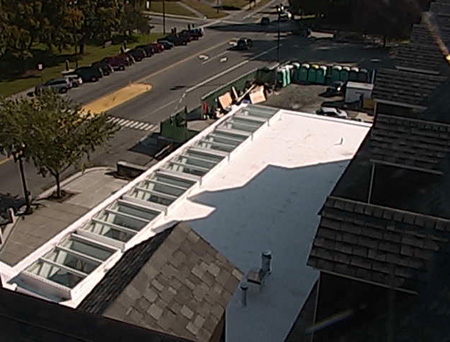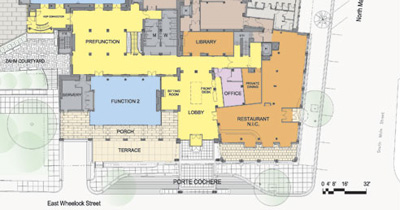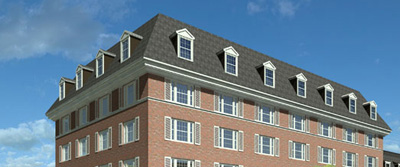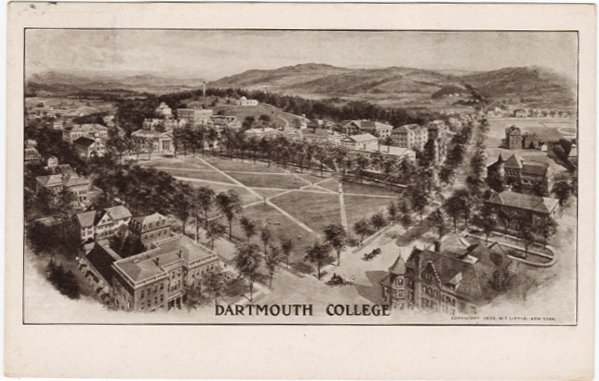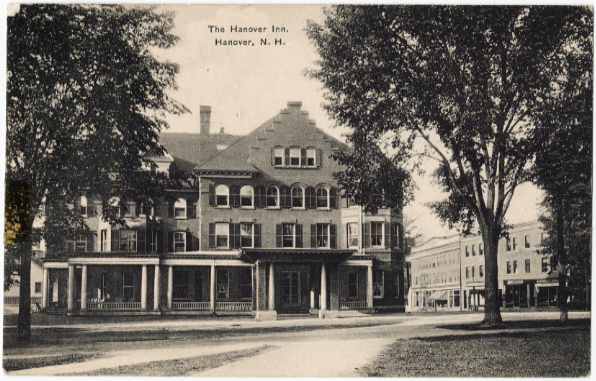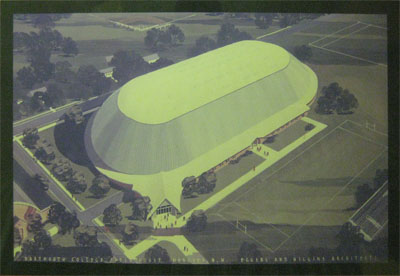The publicity around the Inn expansion constantly emphasizes the building’s “historic” nature. The label seems to come from the Inn’s inclusion in 2011 in the Historic Hotels of America, a program of the National Trust for Historic Preservation.
How does a hotel get into the program?
To be nominated and selected for membership into this prestigious program, a hotel must be at least 50 years old, listed in or eligible for the National Register of Historic Places or recognized as having historic significance.
The nomination form states that “Properties must be a minimum age of 75 years” under the blank for “Year originally built.”
The main block of the Inn will not be 50 years old until 2016. The Inn is not listed on the National Register, and one doubts that any historian has determined the building to be eligible for listing. (If the dates on the main block and the subsidiary wing were swapped, that would be another story.) Nor does anyone, including the National Trust, appear to have recognized the Inn as having historic significance. The phrase “historic significance” refers to the fact that the building was “home to, or on the grounds of, a former home of famous persons or [a] significant location for an event in history.” This HHA definition is in line with one of the criteria for National Register eligibility.
What, then, did the Inn tell the National Trust in its application? Some clues might lie in the text of the HHA page provided for the Inn:
- General Ebenezer Brewster, whose home occupied the present site of the Inn, founded the Dartmouth Hotel in 1780 but later [it] burned to the ground and was replaced two years later on the same site by the Wheelock Hotel.
As corrected, this sentence is adequate as an anecdote, although it makes one wonder who would care about something occurring “two years later” than an unspecified date.
To be a bit more accurate, the page might say that the inn established by Brewster was usually called Brewster’s Tavern. Around 1813, Brewster’s son replaced the building with a completely different building called the Dartmouth Hotel. That building burned in 1887 and was replaced in 1889 with a completely different building called the Wheelock Hotel. That building was demolished in the 1960s and is no longer standing:
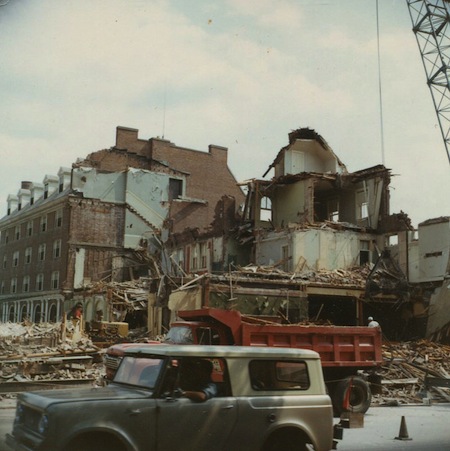 Mid-1960s photo by Emil Rueb of the demolition of the 1889 Inn, with the surviving 1924 wing visible in the background. Image from the Flickr photostream of the Town of Hanover, N.H. (where it is courtesy of Dena Romero).
Mid-1960s photo by Emil Rueb of the demolition of the 1889 Inn, with the surviving 1924 wing visible in the background. Image from the Flickr photostream of the Town of Hanover, N.H. (where it is courtesy of Dena Romero).
To continue:
- From 1901-1903, Dartmouth College carried out extensive renovations to the facility, which was then renamed the Hanover Inn.
This sentence could be worded better, but it is correct. What is not clear is why anyone would care about those renovations, since the renovated building no longer exists.
- An east wing was added in 1924, followed in 1939 by an exterior expansion.
And that east wing is the oldest part of the Inn. The 1939 information is interesting but irrelevant.
- In 1968 a west wing was added.
Another, more accurate way to put it would be to say that “in 1968, the historic 1889 Hanover Inn was completely demolished, leaving only the 1924 east wing.” The main block of the Inn today, the building standing on the corner, is not “a west wing” attached to something greater than itself: it is the Inn.
- Before Dartmouth College became co-ed, the fourth floor of the Hanover Inn was a single women’s dormitory. The Inn provided chaperones for the single female guests.
These statements probably have some basis in fact. First, if the school was yet not co-ed, why were women living in a dormitory? Because they were Carnival visitors, in town for a few days each year. Second, if they were college-aged, why bother describing them (twice) as “single”? It cannot be meant to distinguish them from the veterans’ wives living in married students’ housing after WWII, since those women were not segregated by gender. Third, the statement about the chaperones is interesting, if true. But considering that Carnival dates at the Inn were not staying in a temporarily-cleared dormitory, and thus were paying for their rooms, the Inn must have found it cost-effective to station a few women in the halls to mind the furnishings.
- The Hanover Inn is the oldest continuous[ly-operated] business in the state of New Hampshire.
That might be true, if the various hotels dating back to Brewster are considered as a single business. One might prefer Tuttle Farm, which has been operating since 1632 and apparently has been owned by just one family.
—————–
[Update 07.14.2012: The Inn is now accurately emphasizing the fact that a hostel has existed on the site since 1780. See for example Dartmouth Now.]
